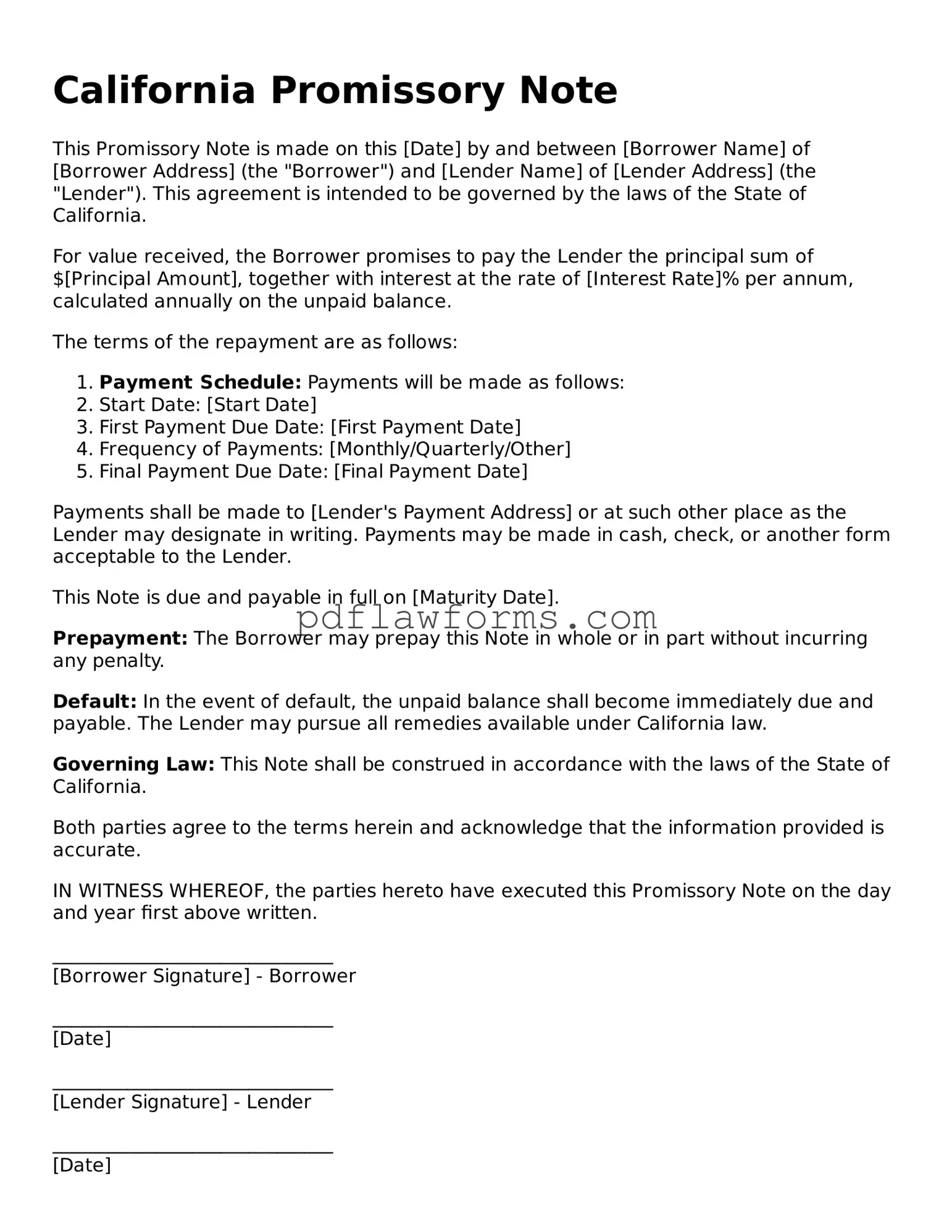Promissory Note Form for the State of California
A California Promissory Note is a written promise to pay a specified amount of money to a designated party at a defined time or on demand. This legally binding document outlines the terms of the loan, including interest rates and repayment schedules. Understanding this form is essential for both lenders and borrowers to ensure clarity and enforceability in financial transactions.
To start filling out the form, click the button below.
Make My Document Online
